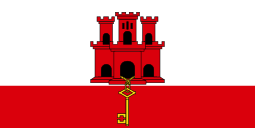Ralph Eastwood
| Sir Ralph Eastwood | |
|---|---|
| Born |
10 May 1890 Canterbury, Kent |
| Died |
15 February 1959 (aged 68) Rodmarton, Gloucestershire |
| Allegiance |
United Kingdom New Zealand |
| Service/branch |
British Army (1910–14, 1918–47) New Zealand Expeditionary Force (1914–18) |
| Years of service | 1910–47 |
| Rank | Lieutenant General |
| Commands held |
Gibraltar (1944–47) Northern Command (1941–44) Home Guard (1940–41) 4th Infantry Division (1940) 59th Infantry Division (1939–40) Royal Military College, Sandhurst (1938–39) 2nd Battalion, The King's Royal Rifle Corps (1934–36) |
| Battles/wars |
First World War North Russia Intervention Second World War |
| Awards |
Knight Commander of the Order of the Bath Distinguished Service Order Military Cross Mentioned in Despatches (6) Grand Cross of the Order of Adolphe of Nassau (Luxembourg) |
Lieutenant General Sir Thomas Ralph Eastwood, KCB, DSO, MC (10 May 1890 – 15 February 1959) was a senior British Army officer and Governor of Gibraltar during the Second World War.
Early life
Thomas Ralph Eastwood was born on 10 May 1890 at Canterbury in the county of Kent in England.[1] He was the second son of Captain (later Colonel) Hugh de Crespigny Eastwood of the King's Dragoon Guards who went on to distinguish himself in the Second Boer War, earned the Distinguished Service Order in 1902 and finished his military career as Inspector of Cyclist Units in 1918. Ralph's mother was Elinor, who married Hugh in 1887 and was the daughter of General John Hall Smyth.[2] Elinor's sister was Ethel Smyth, the composer and militant suffragette.[3] Ralph's older brother Hugh became a lieutenant commander in the Royal Navy.[2] Eastwood was educated at Eton College from 1904 to 1908.[4]
Military career
After leaving Eton, Eastwood was accepted into the Royal Military College, Sandhurst.[4] He was commissioned into the Rifle Brigade (Prince Consort's Own) in October 1910.[5] In November 1912, he was appointed Aide-de-Camp to the Governor of New Zealand, Lord Liverpool. He was released from this role on the outbreak of the First World War, when he was commissioned into the New Zealand Expeditionary Force, later serving as a captain in the New Zealand Rifle Brigade (Earl of Liverpool's Own). After participating in the occupation of German Samoa, Eastwood left New Zealand with the Third Reinforcement in February 1915, arriving at Suez by sea forty days later.[1] In April 1915, his battalion was deployed to Gallipoli, where he was awarded the Military Cross for his leadership of a column during a night assault on 6–7 August 1915. After service with the Egyptian Expeditionary Force, Eastwood's brigade was transferred to France, where in October 1917 he became a General Staff Officer with the rank of major.[4]
Eastwood transferred back to the British Army on 17 October 1918, and in 1919 he served in the ill-fated North Russia Intervention, as Brigade Major on Lord Rawlinson's staff. After further staff duties at Aldershot, Cork in Ireland, and the War Office in London, Eastwood became an instructor at the Staff College, Camberley, in 1928.[4] Following a spell as Commanding Officer of the 2nd Battalion, The King's Royal Rifle Corps, he was appointed Commandant of the Royal Military College, Sandhurst, with the rank of major general in 1938.[6]
At the outbreak of the Second World War in 1939, Eastwood was appointed General Officer Commanding of the 59th (Staffordshire) Infantry Division in the British Expeditionary Force, a command he held until 31 May 1940. He was next given command of the 4th Infantry Division. In October 1940, he was appointed to the new post of Inspector-General of the Home Guard, becoming Director-General of the Home Guard with the rank of lieutenant general in November. In June 1941, Eastwood was appointed General Officer Commanding-in-Chief of Northern Command.[6] He went on to be Governor of Gibraltar in 1944 and retired from the British Army in 1947.[7] In 1945 he accepted the largely honorary post of Colonel Commandant of the 1st Battalion the Rifle Brigade,[8] relinquished in 1951, when he became a Justice of the Peace in Wiltshire.
Family life
Ralph Eastwood married Mabel Vivian Prideaux on 21 April 1921; they had one son, Thomas Hugh Eastwood (12 March 1922– 25 October 1999), who was a composer. Ralph died on 15 February 1959 at Rodmarton in Gloucestershire.[4]
References
- 1 2 "Cenotaph Record – Thomas Ralph Eastwood". www.aucklandmuseum.com. The Auckland War Memorial Museum. Retrieved 12 April 2014.
- 1 2 "Medals and awards – Non-Boer War". angloboerwar.com. Anglo Boer War Website. Retrieved 12 April 2014.
- ↑ "Voyages In Time ~ The Family Vault – Ethel Smyth". Retrieved 12 April 2014.
- 1 2 3 4 5 Houterman, Hans; Koppes, Jeroen (August 2005). "British Army Officers 1939–1945 – Eagger, A.A. to Exham, R.K.". www.unithistories.com. Retrieved 12 April 2014.
- ↑ The London Gazette: no. 28346. p. 1684. 8 March 1910. Retrieved 17 October 2009.
- 1 2 Farahardupre
- ↑ The London Gazette: (Supplement) no. 37969. p. 2475. 30 May 1947. Retrieved 17 October 2009.
- ↑ The London Gazette: (Supplement) no. 36973. p. 1309. 6 March 1945. Retrieved 17 October 2009.
| Military offices | ||
|---|---|---|
| Preceded by Bertie Fisher |
Commandant of the Royal Military College Sandhurst 1938–1939 |
Succeeded by Academy in alternative use during the War |
| Preceded by Dudley Johnson |
General Officer Commanding the 4th Division June 1940 – October 1940 |
Succeeded by John Swayne |
| Preceded by Sir Ronald Adam |
GOC-in-C Northern Command 1941–1944 |
Succeeded by Sir Edwin Morris |
| Preceded by Sir John Burnett-Stuart |
Colonel-Commandant of the 1st Battalion, Rifle Brigade (Prince Consort's Own) 1945–1951 |
Succeeded by Sir Montagu Stopford |
| Government offices | ||
| Preceded by Sir Noel Mason-Macfarlane |
Governor of Gibraltar 1944–1947 |
Succeeded by Sir Kenneth Anderson |

